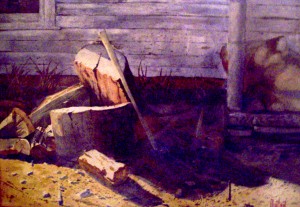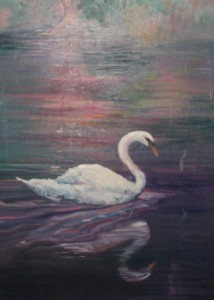“ No great artist ever sees things as they really are. If he did, he would cease to be an artist.” ~ Oscar Wilde

When we look around in nature, we see a mixture of hard and soft edges because there is hardly ever a time that any scene is in sharp focus all the time. When we give one area our main focus, the surrounding area is out of focus. Where we focus is filled with hard edges, and the surrounding area is filled with soft edges. As artists, how do we paint these scenes successfully? We don’t, unless we have a good understanding of edges.
If an artist is a student of edges, they realize edges give their artwork a sense of distance, texture and motion. The degree of excellence in which they paint the edge tells the viewer about the object they are looking at, how it fits into the painting, how the composition works, what kind of light falls on it. Hard edges are descriptive and let us know that what we are looking at may be up close. Whereas, background soft edges are yielding and supple and often suggestive but not as focused. The way an artist treats the edge will direct the viewer to a specific are of the focal point.

The second the artist touches their brush filled with paint to the substrate an edge is created. The edges can vary anywhere from hard to soft and everything in between. But the artist needs to know exactly what it is they are trying to create, otherwise they may fall into the trap of making flat works with limited expression. The hard and soft edges will tell the story, having an impact on the over all feeling of the painting. What is it exactly that the artist is trying to tell the viewer?…the edges know. If the most powerful edges are reserved for the point of focus, and the less conspicuous (soft edges) make up the rest of the composition, the painting tends to work. The artwork itself is given the edge, and it has a greater chance of being marketable.
Enter the subscription for the ART CENTER INFORMATION newsletter at the top right hand side of this page and be automatically entered into a free drawing for a beautiful large coffee table art book.
If you haven’t yet got your artwork copyrighted, see the fabulous instruction E-book on the right hand side of this page. Click on it to read about it.>>>>
Check out the galleries at the top of the page and enjoy the artwork of the Burton Family, as well as the exclusive Lynn Burton Gallery.
We also have some good art products in the opportunities sight at the top of the page.
